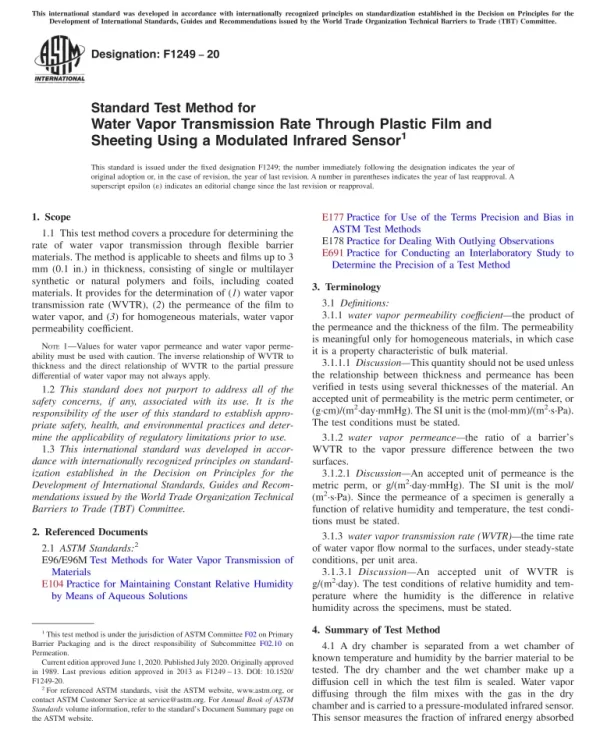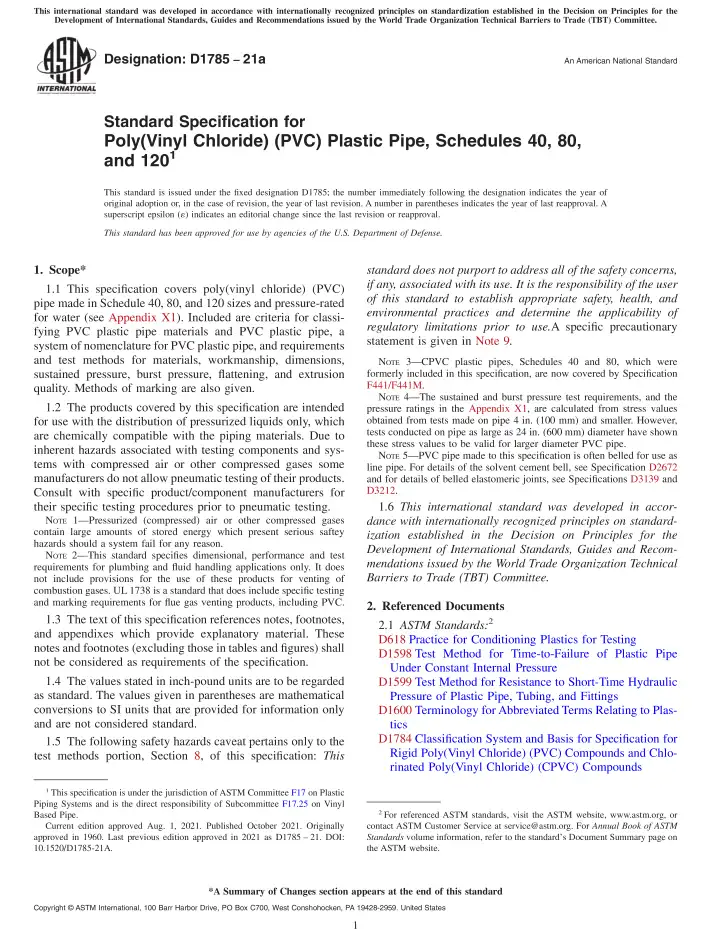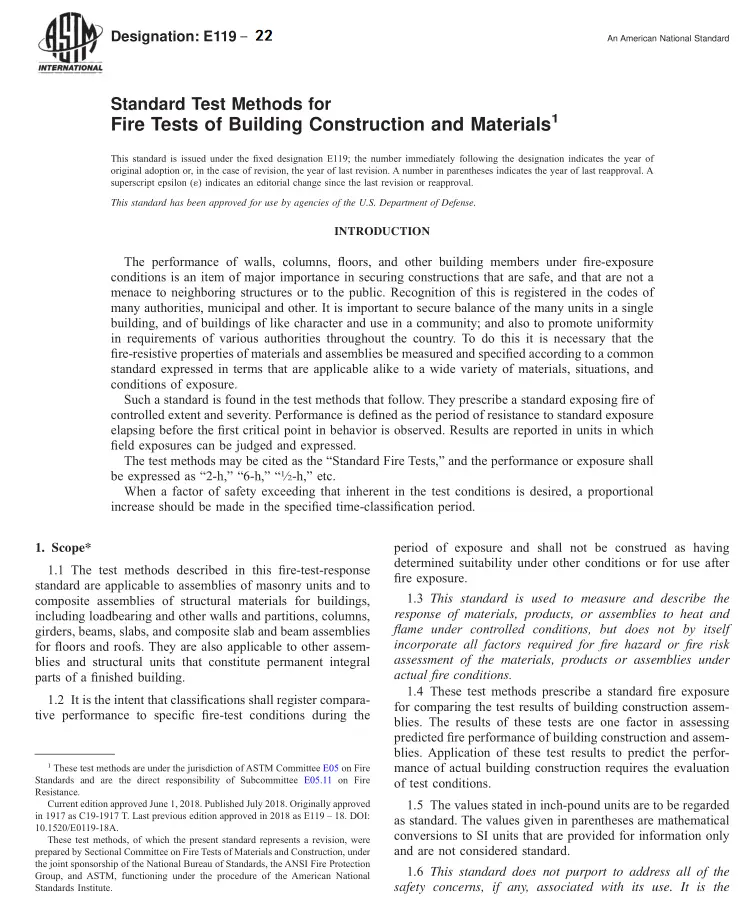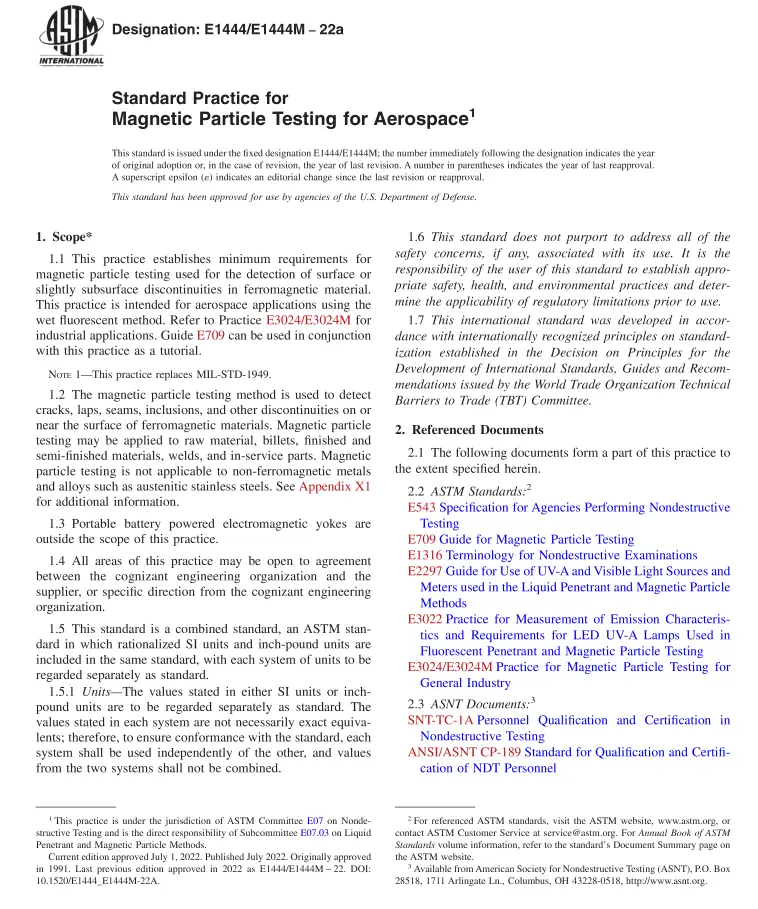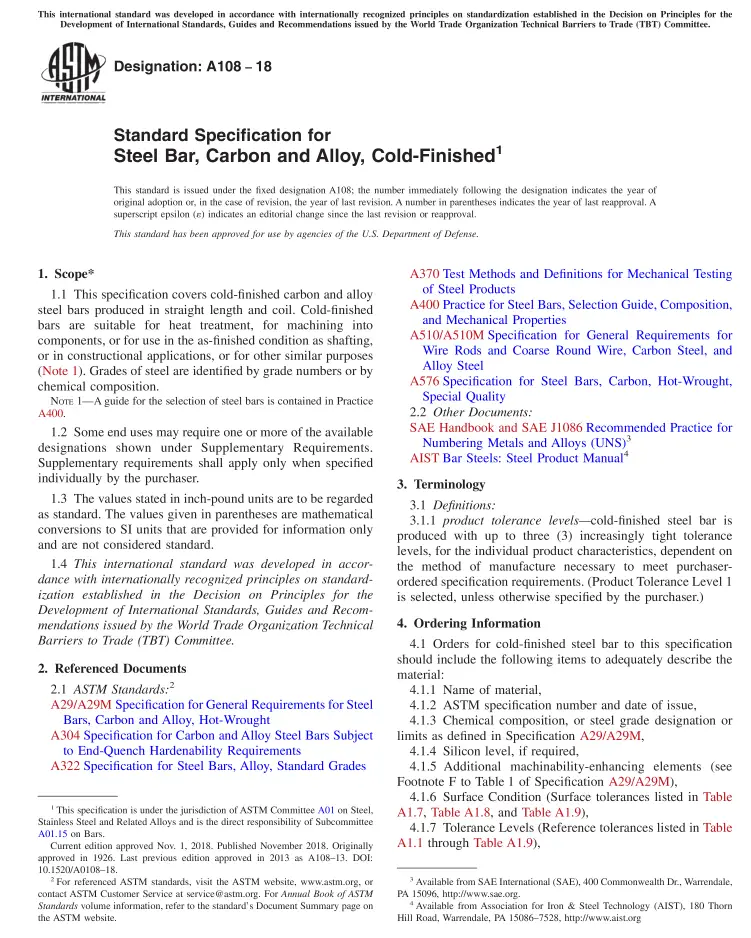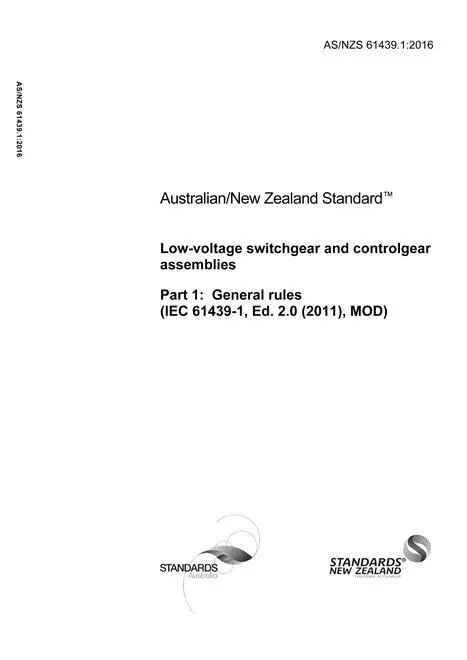ASTM F1249, 2020 Edition – Water Vapor Transmission Rate Through Plastic Film and Sheeting Using a Modulated Infrared Sensor
This test method covers a procedure for determining the rate of water vapor transmission through flexible barrier materials. The method is applicable to sheets and films up to 3 mm (0.1 in.) in thickness, consisting of single or multilayer synthetic or natural polymers and foils, including coated materials. It provides for the determination of (1) water vapor transmission rate (WVTR), (2) the permeance of the film to water vapor, and (3) for homogeneous materials, water vapor permeability coefficient.
NOTE 1—Values for water vapor permeance and water vapor permeability must be used with caution. The inverse relationship of WVTR to thickness and the direct relationship of WVTR to the partial pressure differential of water vapor may not always apply.
This standard does not purport to address all of the safety concerns, if any, associated with its use. It is the responsibility of the user of this standard to establish appropriate safety, health, and environmental practices and determine the applicability of regulatory limitations prior to use.
This international standard was developed in accordance with internationally recognized principles on standardization established in the Decision on Principles for the Development of International Standards, Guides and Recommendations issued by the World Trade Organization Technical Barriers to Trade (TBT) Committee.
General Product Information:
| Revision | 2020 Edition |
| Document Type | |
| Document Language | English |
| Pages | 6 |
| Publisher | ASTM International (ASTM) |
| Status | Current |

